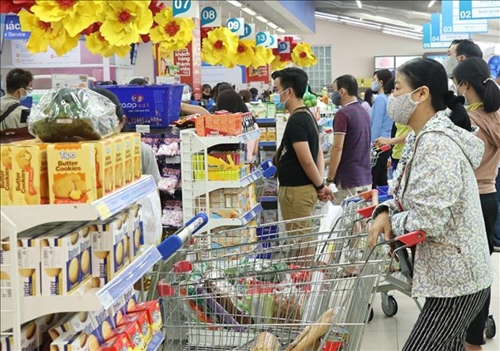The EU’s exports to Vietnam are expected to increase by about 29 percent by 2035, or about 15 billion EUR (17 billion USD), while tariffs on EU products shipped to Vietnam will gradually fall to zero percent.
The Finance Ministry is drafting a decree on preferential export-import tariffs for the 2020-2022 period.
    |
 |
|
Economists have forecast that Vietnamese goods are likely to face intense competition once EVFTA takes effect in early August. (Photo for illustration) |
A survey revealed that nearly two-thirds of Vietnamese consumers are ready to spend more on quality and safe products - higher than the global average of 49 percent.
Domestic firms therefore need to devise strategies on pricing, promotions, and packaging to meet demand.
There remain shortcomings in the “Vietnamese prioritise Vietnamese products” campaign, according to experts, including the prevalence of fake and sub-standard products and those without clear origin.
They said it is necessary for the domestic production sector to restructure and use modern technology to improve human resources and navigate a market of 500 million Europeans.
Deputy Minister of Industry and Trade Do Thang Hai said the ministry is monitoring the consumption of Vietnamese goods at shopping centres, supermarkets, and markets while developing the domestic market and pushing the “Vietnamese prioritise Vietnamese goods” campaign.
The ministry is also implementing Government Resolution No 84/NQ-CP dated May 29, 2020 on tasks and measures to tackle difficulties in production and trade, step up the disbursement of public investment, and ensure social safety and order amid COVID-19.
Apart from State support, domestic enterprises have been urged to develop their trademarks to increase the competitiveness of Vietnamese goods at home.
Source: VNA